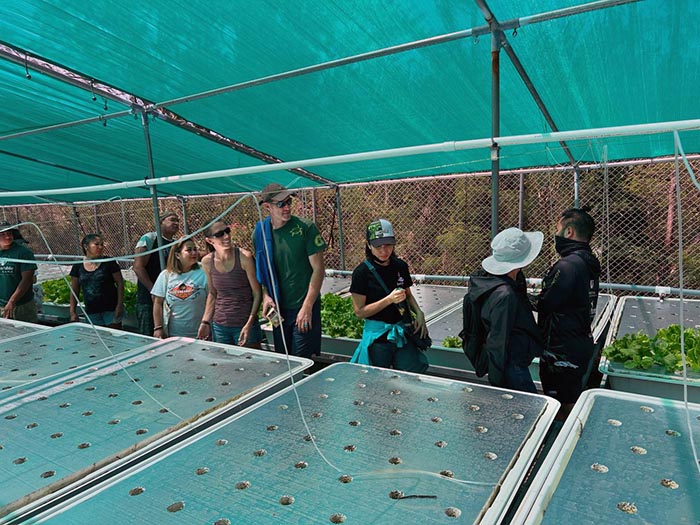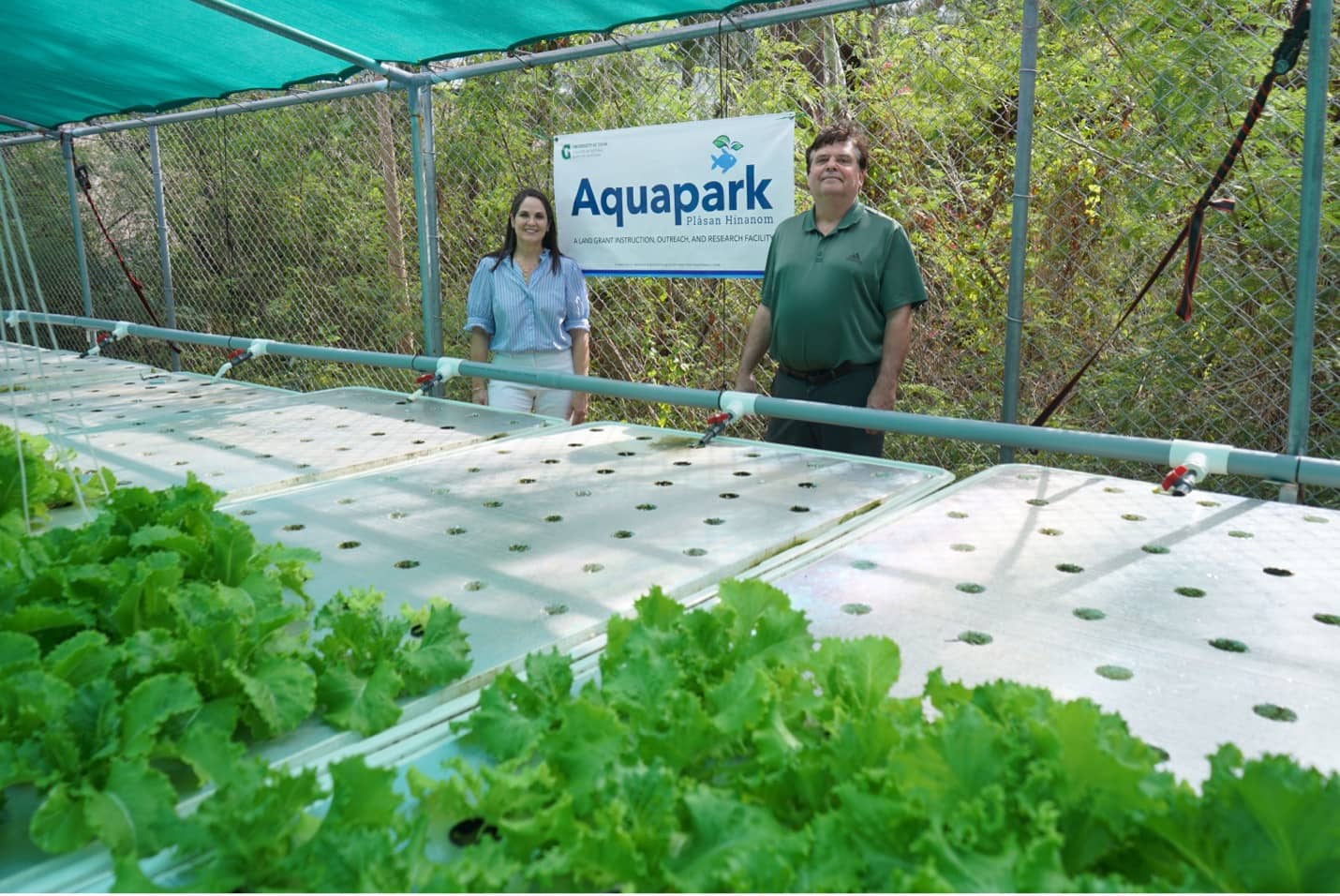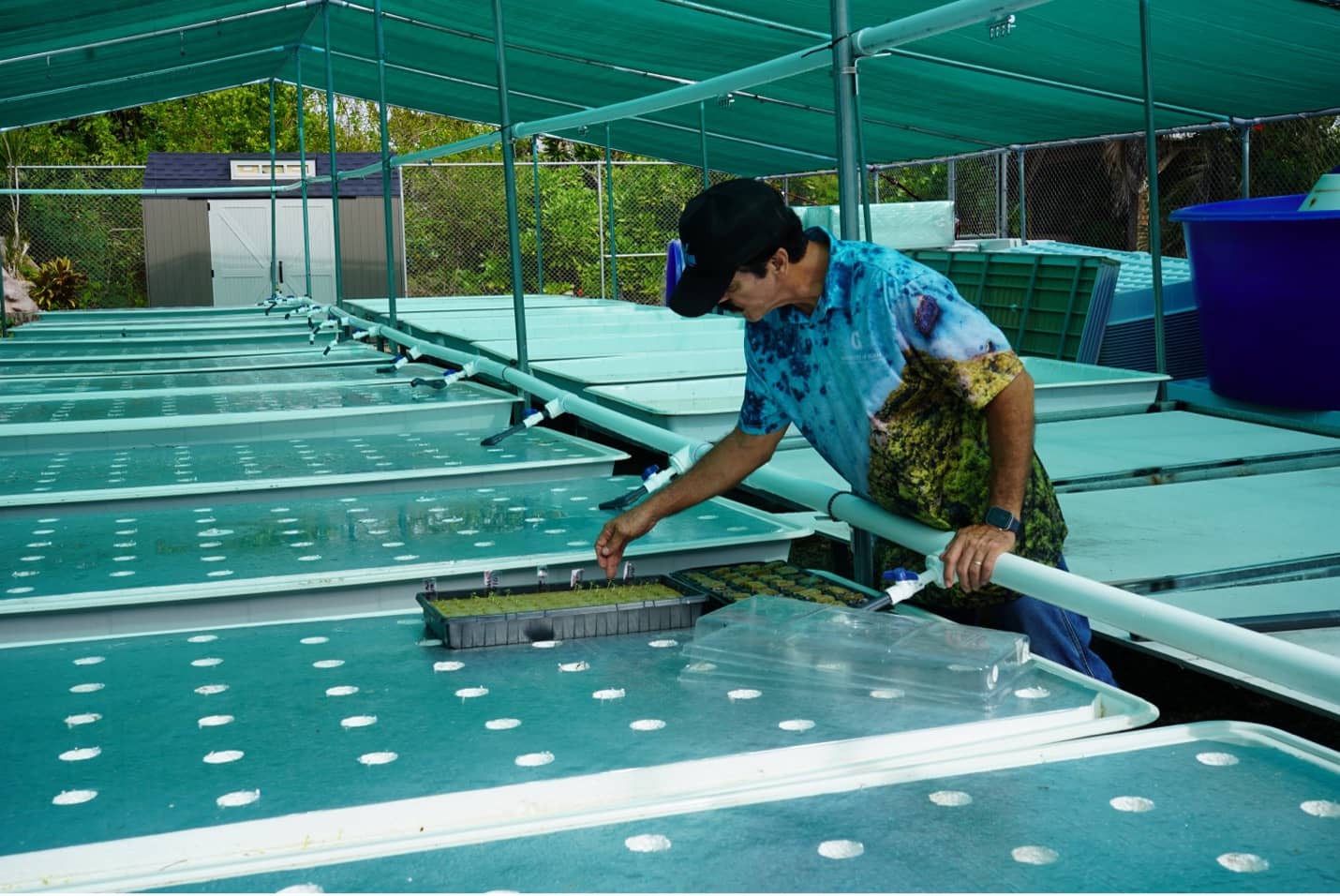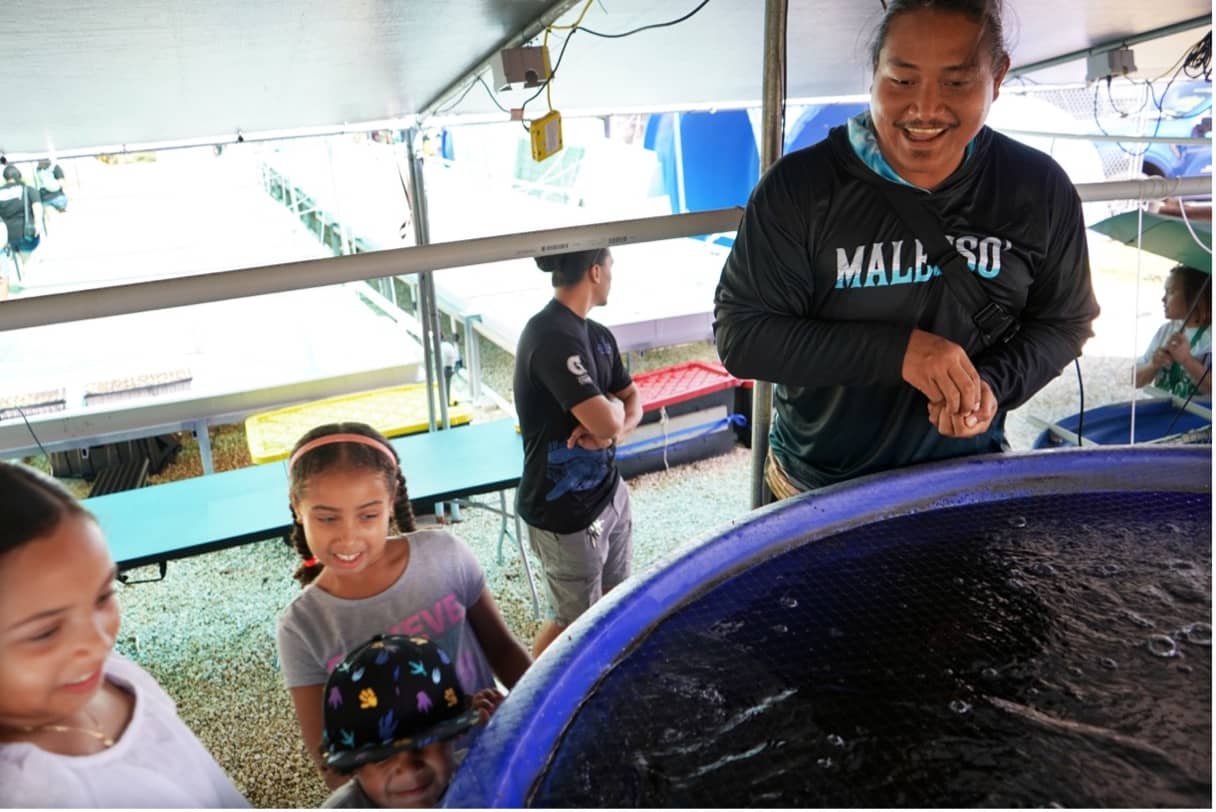UOG reopens aquapark to promote aquaponics as a food security solution
UOG reopens aquapark to promote aquaponics as a food security solution
UOG reopens aquapark to promote aquaponics as a food security solution
3/20/2024
An aquaponics park has reopened on the University of Guam campus by the College of Natural & Applied Sciences. Named the CNAS Aquapark, it will be used for agricultural education, research, and community outreach — the college’s three missions as facilitator of Guam’s Land Grant.
The park made its debut at the university’s Charter Day on March 7. It will facilitate aquaculture research projects and will also serve as an educational venue for students and teachers, farmers, and the community to learn how aquaponics systems work and why they are a smart solution for Guam’s environment and food security.
“In light of Typhoon Mawar last year and the COVID pandemic before that, we have been reminded how vulnerable Guam is when it comes to food security,” said Dr. Adrian Ares, interim associate director of WPTRC. “Aquaponics makes practical sense for an isolated island, and it is critical that we more firmly establish it into Guam’s approach to food production.”
Aquaponics systems produce both plants and fish as food. They make efficient use of space and resources by recirculating water — taking organic waste from the fish and providing it to plants as a fertilizer. The plants, in turn, remove these nutrients and return clean water to the fish. Aquaponics systems use 90% less water than traditional agriculture and also reduce the risk of pesticides leaching into the aquifer.
Located behind the Agriculture & Life Sciences Building on the UOG campus, the aquapark
was first created around 20 years ago by David Crisostomo, who received a limited-term
grant as UOG Cooperative Extension & Outreach faculty.
“Past experiences in aquaculture and agricultural production in Guam have proven that we are capable of producing much more food locally than is currently being produced,” Crisostomo said. “Environmental stewardship and global climate issues also justify the need to examine alternative production strategies.”
 The U.S. Department of Agriculture through the Western Pacific Tropical Research Center
under CNAS provided $120,000 for the aquapark’s revamp in the last three years. The
revamp includes a new fence, reinstallation of water and power, the addition of gravel,
and weed control measures.
The U.S. Department of Agriculture through the Western Pacific Tropical Research Center
under CNAS provided $120,000 for the aquapark’s revamp in the last three years. The
revamp includes a new fence, reinstallation of water and power, the addition of gravel,
and weed control measures.
Research in the park is underway. A USDA Hatch Grant–funded project is exploring three different aquaponics setups for affordability, rate of return, and durability in Guam’s climate to increase the use of aquaponics both commercially and privately on the island. The systems are stocked with tilapia from the university’s Guam Aquaculture Development & Training Center and are growing six types of lettuce. The researchers will be assessing different crops and different species of fish.
The grant is being overseen by WPTRC fisheries scientist Dr. Hui Gong Jiang with Crisostomo as co-project director in his role as an aquaculture specialist with UOG Sea Grant.
“We feel the impact will be significant,” Crisostomo said. “Although the Triton Farm [aquaponics demonstration system] has been operating for more than 20 years, the adoption rate has been small,” he said, which suggests that economic issues, like cost and rate of return, may be a barrier.
Tours and Field Trips
The CNAS Aquapark is available for tours and class field trips and projects by appointment. Aquaculture specialist David Crisostomo is also available to assist interested farmers and businesses. Those interested can call (671) 727-5655.



